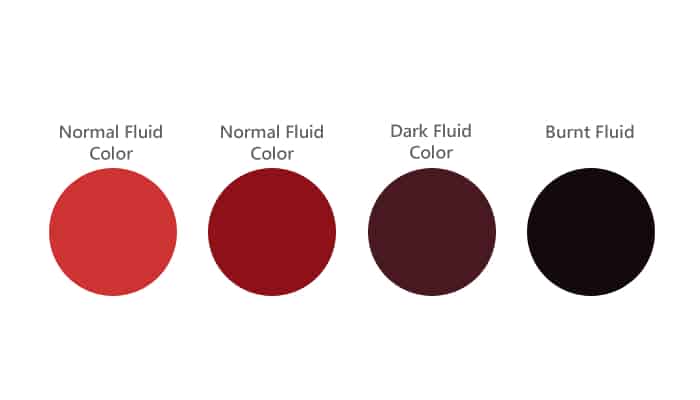Transmission Fluid Specifications for Your Chevy Cruze
When it comes to keeping your 2016 Chevy Cruze running smoothly, one of the most crucial components to pay attention to is the transmission fluid. This fluid not only lubricates the moving parts within the transmission but also helps in cooling and cleaning. Using the right type of transmission fluid is essential for optimal performance and longevity of your vehicle.
Manufacturer’s Recommendations
| Popular posts |
|---|
| What to do to prolong the life of your manual gearbox |
| Automatic transmission: what it is, how it works |
For the 2016 Chevy Cruze, General Motors (GM) has specific recommendations regarding the type of transmission fluid to use. The manufacturer specifies that the Cruze requires Dexron VI transmission fluid. This fluid is designed to meet the stringent requirements of modern automatic transmissions, ensuring smooth shifting and overall efficiency.
Why Dexron VI?
Using Dexron VI transmission fluid is not just a suggestion; it’s a necessity. Here are some reasons why this fluid is recommended:
- Improved Performance: Dexron VI is engineered to provide better performance in terms of shifting and responsiveness. It helps in maintaining optimal transmission function, especially under various driving conditions.
- Enhanced Protection: This fluid offers superior protection against wear and tear, which is crucial for the longevity of your transmission. It contains advanced additives that help in reducing friction and preventing deposits.
- Temperature Stability: Dexron VI is formulated to perform well at a wide range of temperatures. This means it can handle both the heat generated during heavy driving and the cold temperatures during winter without losing its effectiveness.
- Compatibility: If you ever need to top off your transmission fluid, using Dexron VI ensures compatibility with the existing fluid in your transmission, reducing the risk of issues that can arise from mixing different types of fluids.
Fluid Characteristics
Understanding the characteristics of Dexron VI can help you appreciate why it is the go-to choice for your Cruze. Here are some key specifications:
- Viscosity: Dexron VI has a viscosity rating that allows it to flow easily under various conditions, ensuring that all parts of the transmission are adequately lubricated.
- Color: Typically, Dexron VI is a bright red color, which helps in identifying leaks and monitoring fluid condition.
- Life Span: This fluid is designed to last longer than previous generations, which means fewer changes and less hassle for you as an owner.
Where to Find Dexron VI
You can find Dexron VI transmission fluid at most auto parts stores, dealerships, and online retailers. Always ensure that you are purchasing a product that explicitly states it meets the Dexron VI specification. Avoid generic or off-brand fluids that do not meet these standards, as they can lead to transmission problems down the line.
In summary, using the right transmission fluid is vital for the health of your 2016 Chevy Cruze. Stick to the manufacturer’s recommendations and ensure you are using Dexron VI to keep your transmission running smoothly for years to come.
Recommended Oil Brands for Your Chevy Cruze Transmission Fluid
When it comes to maintaining your 2016 Chevy Cruze, choosing the right transmission fluid is essential. While the manufacturer recommends Dexron VI, not all brands are created equal. Based on feedback from forums and owner experiences, certain brands have emerged as favorites among Chevy Cruze owners. Let’s dive into the most recommended oil brands for your transmission fluid needs.
Top Recommended Brands
Here are some of the most trusted brands that Chevy Cruze owners frequently recommend for Dexron VI transmission fluid:
- AC Delco: As the original equipment manufacturer (OEM) for GM vehicles, AC Delco’s Dexron VI fluid is a top choice. Many owners appreciate the peace of mind that comes with using a product designed specifically for their vehicle. Users report smooth shifting and reliable performance.
- Mobil 1: Known for its high-quality synthetic oils, Mobil 1’s Dexron VI fluid is favored for its excellent thermal stability and wear protection. Many users have noted improved performance, especially in extreme driving conditions.
- Valvoline: Valvoline’s Dexron VI fluid is another popular choice among Cruze owners. Users have reported that it provides a noticeable improvement in shifting quality and overall transmission performance. Valvoline is often praised for its affordability without compromising quality.
- Castrol: Castrol’s transmission fluid is well-regarded for its ability to maintain viscosity under varying temperatures. Many owners have shared positive experiences regarding its performance and longevity, making it a solid option for those looking to extend the life of their transmission.
- Royal Purple: For those who are willing to invest a bit more, Royal Purple offers a high-performance Dexron VI fluid that is often recommended for its superior protection and performance. Owners have reported enhanced responsiveness and smoother shifts, especially in high-stress driving situations.
Owner Experiences and Feedback
The experiences of fellow Chevy Cruze owners can provide valuable insights when selecting the right transmission fluid. Here are some common themes and feedback gathered from various forums:
- Performance Improvements: Many users have reported noticeable improvements in shifting performance after switching to recommended brands. Smooth transitions between gears and reduced slippage are frequently mentioned benefits.
- Longevity: Owners who have used high-quality fluids like AC Delco or Mobil 1 often report longer intervals between fluid changes, which can save time and money in the long run.
- Temperature Management: Several users have noted that certain brands, particularly synthetic options like Royal Purple, perform better in extreme temperatures, helping to prevent overheating and maintaining fluid integrity.
- Cost vs. Quality: While some owners prefer premium brands like Royal Purple for their performance benefits, others find that mid-range options like Valvoline provide excellent results without breaking the bank. This balance of cost and quality is a common topic of discussion among owners.
Where to Buy
You can find these recommended brands at various locations, including:
- Auto Parts Stores: Retailers like AutoZone, O’Reilly Auto Parts, and Advance Auto Parts typically carry a range of transmission fluids, including the recommended brands.
- Online Retailers: Websites like Amazon and RockAuto often have competitive prices and a wide selection of transmission fluids. Make sure to check reviews and ratings before purchasing.
- Dealerships: While often more expensive, purchasing from a GM dealership guarantees you are getting OEM-approved fluids, which can be a safe bet for your Cruze.
In summary, choosing the right transmission fluid for your 2016 Chevy Cruze can significantly impact its performance and longevity. By considering the experiences of fellow owners and opting for trusted brands, you can ensure your vehicle runs smoothly for years to come.
Change Interval for Your Chevy Cruze Transmission Fluid
Maintaining your 2016 Chevy Cruze involves regular checks and changes of the transmission fluid to ensure optimal performance. Understanding the change interval is crucial for keeping your transmission in good shape.
Recommended Change Interval
For the 2016 Chevy Cruze, the general recommendation for changing the transmission fluid is every 50,000 to 100,000 miles (approximately 80,000 to 160,000 kilometers ). However, this can vary based on driving conditions and habits. Here are some factors to consider:
- Driving Conditions: If you frequently drive in stop-and-go traffic, tow heavy loads, or operate in extreme temperatures, you may need to change your transmission fluid more often.
- Fluid Condition: Regularly checking the condition of your transmission fluid can help determine if it needs to be changed sooner. If the fluid appears dark or has a burnt smell, it’s time for a change.
- Manufacturer Guidelines: Always refer to your owner’s manual for specific recommendations tailored to your vehicle. GM may have updated guidelines based on new research or feedback from owners.
Partial Transmission Oil Changes
In many cases, a full transmission fluid change requires removing the transmission from the vehicle, which is not only labor-intensive but also costly. This is where partial transmission oil changes come into play.
What is a Partial Change?
A partial transmission oil change involves draining a portion of the old fluid and replacing it with new fluid. This method is often more accessible and can be performed without removing the transmission. Here are some key points to consider:
- Fluid Replacement: Typically, a partial change replaces about 30-50% of the fluid, which can help maintain the overall health of the transmission without the need for extensive labor.
- Cost-Effective: Partial changes are generally more affordable than full fluid changes, making them a practical option for many owners.
- Frequency: Depending on your driving conditions, you may consider doing partial changes more frequently than full changes, perhaps every 15,000 to 30,000 miles (approximately 24,000 to 48,000 kilometers).
Justification for Partial Changes
Statistical data and automotive studies support the effectiveness of partial transmission fluid changes. According to the Automatic Transmission Rebuilders Association (ATRA), regular partial fluid changes can significantly extend the life of your transmission. Here are some key findings:
- Fluid Degradation: Transmission fluid degrades over time due to heat and friction. By regularly replacing a portion of the fluid, you can help maintain its effectiveness and prevent the buildup of harmful contaminants.
- Cost Savings: A study by the National Institute for Automotive Service Excellence (ASE) found that vehicles that underwent regular partial fluid changes experienced fewer transmission failures, resulting in lower repair costs over time.
- Owner Feedback: Many owners report that partial changes have helped maintain smoother shifting and overall performance, reinforcing the idea that keeping fresh fluid in the system is beneficial.
By understanding the importance of change intervals and the benefits of partial transmission fluid changes, you can take proactive steps to ensure the longevity and performance of your 2016 Chevy Cruze. Regular maintenance is key to avoiding costly repairs and keeping your vehicle running smoothly.
What Color Should Transmission Fluid Be?


